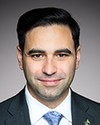Thank you to the Standing Committee on Citizenship and Immigration for the honour and opportunity to speak to you on this topic, immigration measures for the protection of vulnerable groups.
Following my comments, my colleague at the B.C. bar, Mr. Jasdeep Mattoo, will be addressing specifically the issue of source country class. I thank him for his input on my prepared comments.
By way of background, I have practised public international human rights law since 1991. I was also appointed for two mandates through order in council to the Immigration and Refugee Board of Canada from 2002 through to 2010, with the return to private practice in advance of my end of mandate in 2007.
While there are many groupings of persons throughout the world who are worthy of protection, and internally displaced persons, I thank the committee for focusing on two prominent examples of peoples who have suffered persecution in their countries of nationality to the point of internal displacement as a result of that persecution. These are the Yazidi people of modern-day Iraq and Syria and the Afghani Sikhs, also known as Pathan Sikhs and Hazara Sikhs.
For the latter example, I wish to especially recognize the efforts of the late and great member of the Legislative Assembly of Alberta, the Honourable Manmeet Singh Bhullar, whose untimely passing last year while assisting a stranded motorist deeply affected Canadians across our land.
Respecting the Yazidi, one month ago, on June 16, 2016, a United Nations mandated human rights enquiry reported that the Islamic state of Iraq and al-Sham or ISIS, also known as ISIL and Daesh, is committing genocide against the Yazidi people that amounts to crimes against humanity and war crimes today. Hundreds of thousands of them are now in refugee camps as internally displaced individuals on Syria's border regions with Iraq and in Iraq itself.
Today, according to various subjective sources at the United Nations and the Afghan government itself, an estimated 4,000 Sikhs remain isolated or as internally displaced persons in Afghanistan and the Hindu community is virtually considered extinguished, a sad indictment indeed.
Prior to the Soviet Union's invasion of Afghanistan the community was magnitudes larger, in the hundreds of thousands, vibrant and well integrated. There are many analogies between the Sikhs of Afghanistan prior to extremist Taliban focus and the Yazidi prior to the destructive focus brought by ISIS against them. Hence, how Canada or other entities can afford protection to such peoples is a timely matter for this committee to examine.
Examples of laws proposed and implemented in Afghanistan, for example, were laws prohibiting Sikhs from building new worship centres, riding horses in the city, wearing clothes similar to Muslims, shaking hands with Muslims, and living in houses with Muslims. They also had to fly yellow banners above their houses and shops to distinguish themselves. One does not need to be a student of history to understand the significance of that type of action.
It's no small wonder that many have fled Afghanistan over the decades, but the plight of those remaining is dire indeed. The main unfortunate tie that binds the plight of the Yazidi and Afghan Sikhs is that their main agents of persecution have been non-state actors—and of course I mean their agents of persecution, not the government's—that the state is unable and or unwilling to control.
To date, the United Nations definition respecting who the refugee is has governed our domestic law, specifically the 1951 UN convention. The committee is well familiar with the definition. The definition is one that fits the post-World War II time period, as state actors were generally the agents of persecution. While reliance upon this definition is warranted for many persecuted people, the main confining characteristic is that persons concerned, by necessity, must be outside of their country of nationality. What ought to be noted is that our Canadian case law supports the contention that cumulative acts of harassment can amount to a finding of well-founded fear of persecution. This is very significant, insofar as one need not wait for individualized persecution to commence for one to fit within the definition.
Absent a significant amendment to this 1951 convention where hundreds of nations are now signatories, there exists really no or little formal protection one can offer to internally displaced persons.
Given the very limited time frame that we have to speak on this, I shall concentrate only on two potential avenues of redress and safety for those suffering acts of persecution within their own national borders, namely, a genocide determination and a differing application of what's commonly known as R2P or responsibility to protect.
First, turning to the designation of genocide that finally was achieved this past June 2016, such a designation, rare under international law, would mark the first recognized genocide carried out by non-state actors rather than state or paramilitaries.
It's significant insofar as the nature of conflict crosses international boundaries with increased technologies and mobility. In countries such as Syria, non-state actors such as ISIS operate in many areas with impunity, and the United Nations can arguably engage in robust peacekeeping initiatives supported wholeheartedly by Canada where such genocide designations occur.
Now, the clear deficiency in this process helps the survivors, but it requires many victims in advance. How, then, can Canada be proactive as opposed to reactive in this realm?
This requires some thinking outside of the box, and respectfully I suggest another potential avenue based on the R2P, or the responsibility to protect. This doctrine is an innovative human security regime that Canada helped to establish under the strong advocacy of former prime minister Paul Martin. In September 2005, R2P was adopted at the UN world leaders summit in New York.
Jennifer Welsh, a Canadian-born international human relations expert at Oxford, noted that Prime Minister Martin reached out to a number of world leaders, convincing them to support articles that acknowledge the responsibilities of individual states and the international community to protect populations from mass atrocity crimes. In the words of Prime Minister Martin, “R2P says that if a government is oppressing its people, or if a government is unable to protect its people from oppression, then it is the duty of other countries to step in and make things right”.
Thus the focus is upon human security as opposed to national security, which is often invoked by nation-states in the governance of people within their territories. Now, under R2P, sovereignty is based upon the degree to which a nation can protect its people; and if protection is inadequate, sovereignty is clearly amended and can be abridged.
Admittedly it sets a high bar. For example, as a former cabinet member noted, all other options—sanctions, arms embargoes, no-fly zones, etc.—should be exhausted before the UN authorizes the use of military force against a nation-state.
What is clear, though, is that R2P is a Canadian contribution, and in many ways it's an initiative designed to protect those such as the Yazidi and the Afghan Sikhs, if one is to take it to its logical conclusion. Canada can again lead the way in proposing a methodology to assist such individuals.




